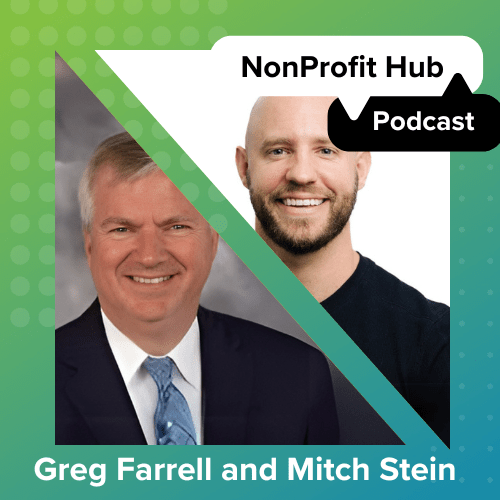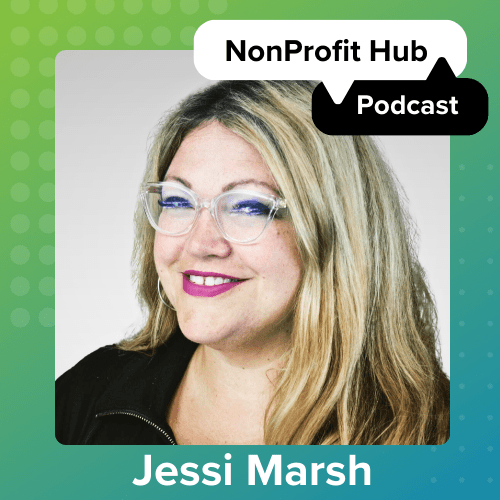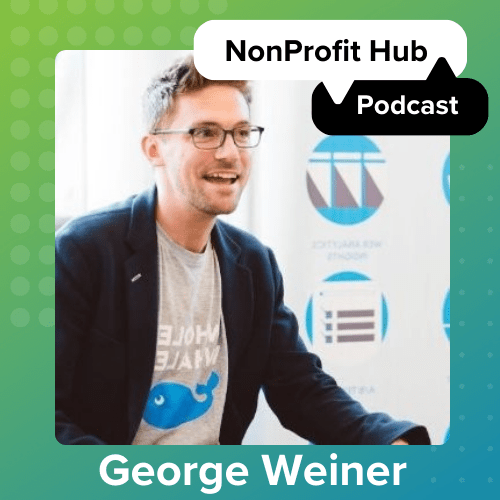Small nonprofits can scarcely afford to lose any donors from one year to the next, given the expensive and time-consuming effort that donor acquisition represents. It can be tempting for small nonprofits to focus heavily on donor acquisition. The logic behind it is that the more donors who give to the nonprofit, the larger the nonprofit becomes. However, this only tells half of the story.
The logic of acquiring more donors to grow your nonprofit holds true only when you’re able to keep that engagement high over a long period of time. This means that your nonprofit must first master the art of effective donor retention.
There are several reasons donor retention is so important for nonprofits:
First, it’s much less expensive to ask a donor to give again than to perform enough outreach to acquire a new donor.
Second, when donors give to your organization over time, they’re more likely to increase their contribution amounts and leave gifts in their will.
Third, retained donors are a more reliable source of referrals, volunteerism and peer-to-peer fundraising for your nonprofit.
As you can see, donor retention is a key part of any nonprofit’s organization strategy. In order to effectively retain more donors, your nonprofit must consider strategies to achieve three main objectives. These objectives are:
- Prevent donors from lapsing.
- Encourage increased donor engagement.
- Set your nonprofit up for success in the future.
Luckily, we’ve already compiled a list of strategies to help your nonprofit achieve these goals. Even if your staff power is low, your nonprofit can take the necessary steps to grow. Let’s jump in to learn more.
Strategies to Prevent Donors From Lapsing
On average, the recapture rate for lapsed donors is 5%. While it’s not impossible to recapture lapsed donors, it’s incredibly difficult to do. Once a donor stops giving to your nonprofit, more often than not, they’ll never give again.
That’s why your nonprofit should take the necessary actions to prevent donors from ever lapsing to begin with. This means taking the necessary measures to maintain their trust and engagement with your nonprofit.
The last thing you want to do is make a silly mistake that causes donors to second-guess their relationship with your nonprofit. Strategically organizing marketing initiatives can help your nonprofit maintain relationships and prevent supporters from lapsing. Our recommended strategies are: recording all of your communications, and providing diverse opportunities for engagement.
1. Keep records of all of your communications.
Many nonprofits make the mistake of asking donors to do things they’ve already done or asking them questions they’ve already answered, without ever really taking time to appreciate their support. They too often make them feel a little bit like an ATM.
Your donors are not ATMs!
Keeping track of all of your communications in your nonprofit CRM can help your nonprofit space out, contextualize, and avoid repeating asks.
You can also use these records to analyze the effectiveness of your outreach. For instance, if you’re using email to ask for donations, you can track the open and click-through rates of supporters and get an idea of how effective they are.
2. Provide various engagement opportunities.
While we recommend spacing out your fundraising asks, this doesn’t mean halting or limiting communication with your supporters! However, it does mean that it can be more effective to ask for something other than money.
For example, consider the other campaigns your organization launches. You may choose to ask your supporters for:
- Contributions of their time. Volunteers deserve just as much recognition and appreciation as your donors (frequently the groups overlap!) because they are making a donation of time, which is just as valuable. Encourage supporters to sign up to volunteer at your next event or in-office during the busy season.
- In-kind donations. Instead of asking for money, provide a list of in-kind donations a supporter can give. Be sure to tell them exactly what these items will be used for and how they will help serve your mission.
- Advocacy actions. If your nonprofit has an advocacy component, be sure to ask your supporters for help with your advocacy campaigns. Simply signing a petition or calling their legislator on your behalf can help your nonprofit dramatically (every voice matters). Plus, this is an easy way for supporters to contribute without donating money.
- Event attendance. Tell supporters about your upcoming events and opportunities to support your cause by attending. Lead them to event registrations. Maybe they’ll even buy merchandise from your nonprofit.
There’s an infinite number of ways you can provide opportunities to your supporters. Just look at any fundraising idea guide, like this one from Snowball, to get ideas.
By mixing up your communications and providing many different opportunities to get involved with your nonprofit, you’ll keep supporters on their toes. They’ll feel less like an ATM and more like an integral cog for your nonprofit’s operations.
Strategies to Encourage Increased Engagement
Just keeping your donors interested in what your nonprofit has to say isn’t enough. They should be taking action on the different opportunities you provide to them.
Encouraging increased engagement from your nonprofit supporters requires effective marketing and personalization in order to cultivate the relationship.
Relationships are key for encouraging more engagement from your supporters. The two ways we’ll outline to do so include: face-to-face communication and personalized outreach.
3. Encourage face-to-face communication.
Let your donors get to know you and your nonprofit staff members at the different engagement events and meetings. This is especially important when it comes to major gift opportunities.
Major donors especially will want some one-on-one interaction with your nonprofit executives before they provide a large contribution. This allows them to feel closer to the inner workings of your nonprofit and it increases their level of trust in your organization.
While major donors may receive this face-to-face communication in pre-arranged meetings, your lower-dollar-amount donors will also appreciate some one-on-one time at events and other community get-togethers.
Make sure to dig into your donor database before meetings or events in order to learn some details about the donors you’re talking to. Take note of their interests so that you can lean on those topics in conversation and create a smooth exchange.
4. Personalize marketing outreach.
Just as you personalize your face-to-face conversations by touching on the interests of the supporter, your nonprofit should take care to also personalize your marketing outreach.
When did you last take the time to read an email that was addressed, “To whom it may concern”? You probably ignore most of these messages, and so do your donors!
Pull data from your donor database to communicate with supporters on a more personal level. For instance, make sure to:
- Use your donor’s preferred recognition name in the salutation.
- Mention the last engagement opportunities they took advantage of.
- Talk about the impact they’ve helped make toward your mission.
If you’re in the market for a new nonprofit CRM, Bloomerang’s donor database guide can help you make a decision about which solution will best fit your nonprofit’s specific needs. Then, you can effectively leverage personalized data from individual donor profiles for your marketing outreach.
Strategies to Set Yourself Up for the Future
Make sure that your nonprofit is not only prepared to engage and reach out to donors now, but also in the future. Specifically, the software you invest in to boost your donor retention rates should apply just as fully now as it will in the years to come.
Nonprofits tend to have a habit of investing in software solutions that will appeal to their current needs, but that they will quickly outgrow. This means they need to spend all sorts of extra time looking for a new software solution, migrating data, and preparing for the future.
Avoid this classic mistake! When you invest in software, be sure it will serve both current and future needs. We recommend looking for software that offers: scalable solutions, and valuable integrations.
5. Look for scalable software.
We understand that smaller organizations may have difficulty affording the large solutions that bigger nonprofits use to raise money, store donor data and market opportunities. That’s why we recommend smaller organizations look for scalable software.
Scalable software has the potential to grow with your nonprofit as you grow over time. Instead of investing time and energy setting up a new solution each time you outgrow the functionality of your current solution, you can simply scale up your current solution to expand the functionality.
This article explains how scalable software can help your nonprofit save money now if you’re worried about investing in a solution that is too big for your organization. Plus, it helps you save in the future! Investing in new solutions is expensive, so you’ll save more by staying with the same software for a longer period of time. This means more time and resources spent engaging with donors!
6. Take advantage of valuable integrations.
When you invest in new software, take into consideration the other solutions they integrate with. These integrations can come in handy for streamlining data from one solution to another.
For example, when your nonprofit CRM integrates with your fundraising tool, the donor data provided during the donation process is automatically saved in donor profiles in your database.
Streamlining with integrations has many advantages for nonprofits, including:
- Reducing human error. Human error accompanies manual input and transfer of information from one software solution to another. Reducing this will help you save and leverage more accurate information about your donors for the future.
- Saving staff members’ time and energy. When you cut back on the time staff members take to manually transfer data from one software solution to the next, you’re creating more time for them to focus on more important matters. They then have more time to reach out to donors or work on projects to support your mission.
Streamlining as much data as possible through integrations sets your nonprofit up for success in the future. You’ll have more time to focus on engagement activities and developing donor relationships.
Because software is such an essential part of creating engagement opportunities and developing relationships with your supporters, it’s also an integral part of donor retention. This means, in order to set yourself up for success, your nonprofit should work to ensure your software ecosystem is as effective and efficient as possible.
Donor retention is key to helping your nonprofit grow. However, it doesn’t come without hard work! Effectively implementing specific strategies like those outlined in this article to help your organization retain more supporters. And, with better retention rates, your nonprofit will see an improved revenue stream in the years to come. Good luck!






